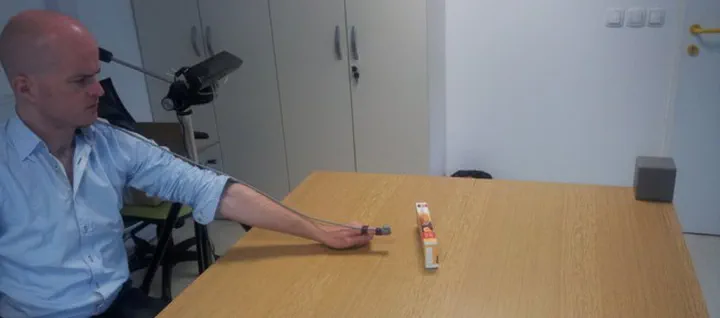Action-Grounded Push Affordance Bootstrapping of Unknown Objects
 Our setup for human object push affordance data gathering.
Our setup for human object push affordance data gathering.Abstract
When it comes to learning how to manipulate objects from experience with minimal prior knowledge, robots encounter significant challenges. When the objects are unknown to the robot, the lack of prior object models demands a robust feature descriptor such that the robot can reliably compare objects and the effects of their manipulation. In this paper, using an experimental platform that gathers 3-D data from the Kinect RGB-D sensor, as well as push action trajectories from a tracking system, we address these issues using an action-grounded 3-D feature descriptor. Rather than using pose-invariant visual features, as is often the case with object recognition, we ground the features of objects with respect to their manipulation, that is, by using shape features that describe the surface of an object relative to the push contact point and direction. Using this setup, object push affordance learning trials are performed by a human and both pre-push and post-push object features are gathered, as well as push action trajectories. A self-supervised multi-view online learning algorithm is employed to bootstrap both the discovery of affordance classes in the post-push view, as well as a discriminative model for predicting them in the pre-push view. Experimental results demonstrate the effectiveness of self-supervised class discovery, class prediction and feature relevance determination on a collection of unknown objects.
Type
Publication
2013 IEEE/RSJ International Conference on Intelligent Robots and Systems